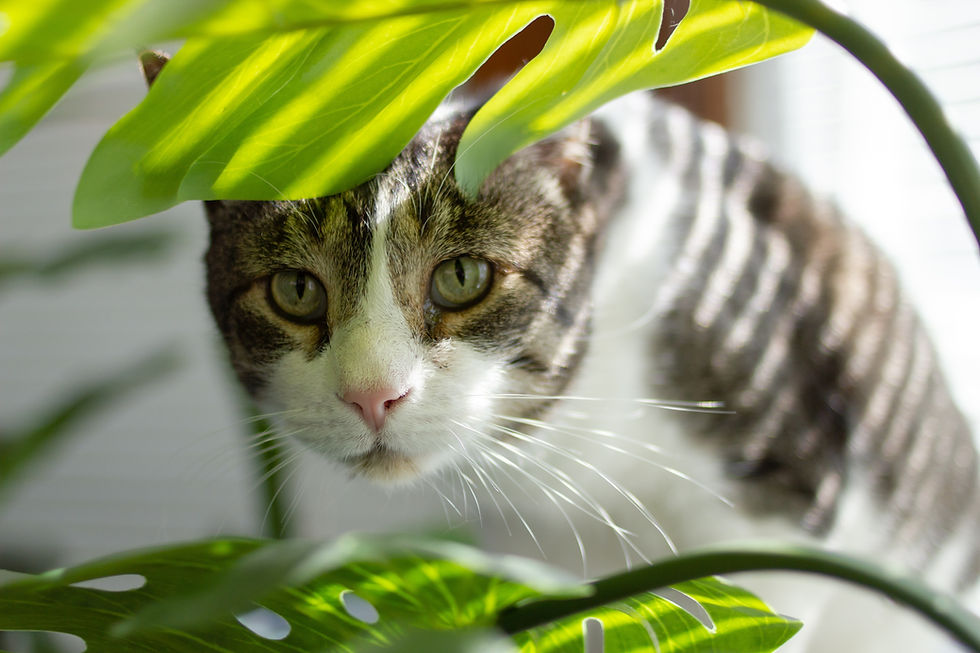How to Pet Your Cat Correctly
- Whiskers Cat Boarding
- May 12, 2021
- 3 min read
Updated: Feb 5, 2024
So that your cat enjoys your company.

Many of us have experienced that friendly cat who seems to love being petted one minute, only to bite or swipe at us the next. It might be easy at this point to blame it on the cat, but what’s likely happening here is that we’re just not petting him right.
Did you know that domestic cats display relatively modest genetic divergence from their ancestors, meaning their brains are probably still wired to think like a wildcat’s? Wildcats live solitary lives and invest considerable time and effort communicating indirectly – via visual and chemical messages – often just to avoid having to see each other, let alone interact physically. So it’s unlikely that domestic cats inherited many complex social skills from their relatives.
Humans, on the other hand, are a social species – favoring closeness and touch to show affection. It’s not surprising that our initial reaction when we see a cat or kitten is to want to pet and cuddle it. Due to a cat's heritage, it should also come as no surprise that many cats can find this type of interaction overwhelming.
Gaining cat affections
When it comes to human-cat interactions, the characteristics of humans are important.
Our personalities, energy levels, slow or fast movements, voice volume, the regions of the cat’s body we touch and how we generally handle cats, all play an important role in how the cat responds to us.
Most cats will feel more comfortable around a person who is calm, moves slowly, speaks gently and quietly, and who only pets the cat if it approaches the person first.
While some cats may react aggressively to unwanted physical attention, others may merely tolerate our social advances. That said, a tolerant cat is not necessarily a happy cat.
How to pet a cat
1. The key to success is to focus on providing the cat with as much choice and control during interactions as possible. For example, the choice to indicate whether they want to be petted or not, and control over where we touch them, and for how long.
2. Have some self restraint when petting a cat. Due to our tactile nature and love of cute things, we often don't notice how uncomfortable the cat is becoming. But noticing these cues from your cat could well pay off, as research shows interactions with cats are likely to last longer when the cat, rather than the human, initiates them.
3. When it comes to touch, less is often more! It's really important to pay close attention to the cat's behavior and posture during interactions, to ensure they are comfortable. This is not only true during veterinary handling, but also during more relaxed encounters with people.
4. As a general guide, most friendly cats will enjoy being touched where their facial glands are located. This includes the base of their ears, under their chin, and around their cheeks. These places are usually preferred over areas such as their tummy, back and base of their tail.
Signs of cat enjoyment:
• Tail held upright and choosing to initiate contact.
• Purring and kneading you with their front paws.
• Gently and slowly waving their tail from side to side while held in the air.
• A relaxed posture and facial expression, ears pricked and pointed forwards.
• Giving you a gentle nudge if you pause while you're stroking them.
Signs of dislike or tension:
• Shifting, moving or turning their head away from you.
• Remaining passive (no purring or rubbing).
• Exaggerated blinking, shaking their head or body or licking their nose.
• Rapid, short bursts of grooming.
• Rippling or twitching skin, usually along their back.
• Swishing, thrashing or thumping tail.
• Ears flattening to the sides or rotating backwards.
• A sharp sudden turn of their head to face you or your hand.
• Biting, swiping or batting your hand away with their paw.
So just remember, though there are a number of cats who do like being touched, there are many that don't — and many tolerate it at best. Ultimately, it's important to respect their boundaries, cues and comfort levels — even if that means admiring their cuteness with limited petting.
.png)




Looking for comments that are not managed by staff...Where are the plusses and minuses?